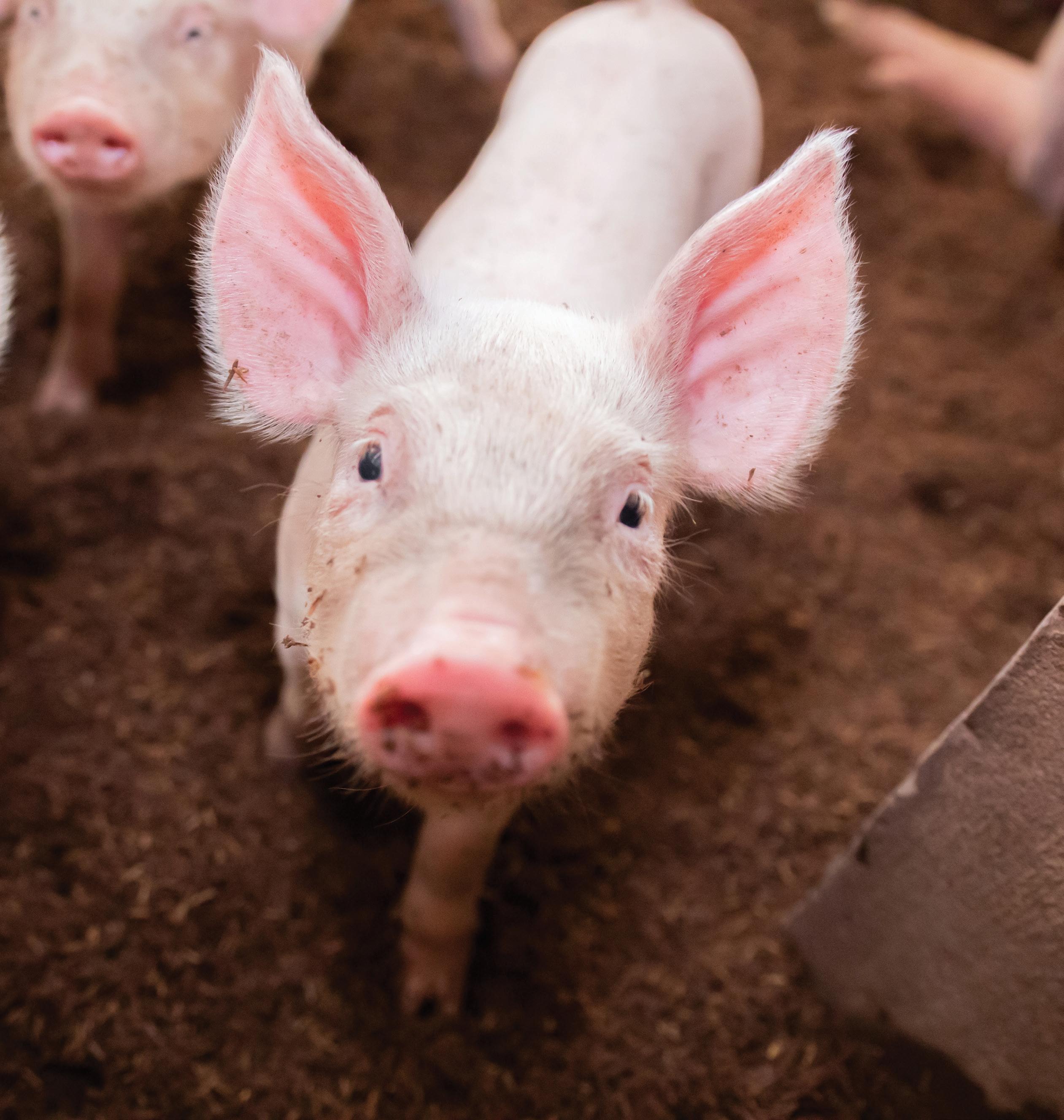Versuchen GOLD - Frei
LIVESTOCK Health
Hobby Farms
|January - February 2025
Prepare yourself for how to spot symptoms of illness in your farm animals so that you can get them help before it's too late.

Wouldn’t it be nice if our animals could communicate with us more clearly? After years of working with exotic and domestic animals in zoos and on my small farm, I can understand some basic “animal-speak.” I know my sheep flock’s incessant baaing means they want dinner now. I understand my mare is snapping, “Get that away from me!” when she pins her ears and jerks back from the deworming syringe. But I want to know more!
Unlike humans, who often have no qualms about making their illness symptoms known to others, livestock have a tendency to hide sickness or injury so they don’t get attacked, eaten or bullied. Signs and symptoms of illness can be subtle, particularly early on. A horse with mild colic, for example, might just seem sleepier than usual or yawn more often, while obvious signs like kicking at the belly and frequent rolling accompany more severe colic. A goat with caprine arthritis encephalitis might show only slight swelling in the knees at first; increased swelling and wasting occur as the disease progresses.
It would be so much easier if livestock could just say, “Hey, you know, I think I’m starting to come down with something …,” but instead the burden falls on us to recognize the warning signs of sickness and injury so we can take swift action.
SPOT SIGNS EARLY?
Why is it so critical for livestock owners to stay alert for early signs of illness?
For one, if a contagious disease is detected promptly, you might be able to prevent its spread to the rest of your herd or flock by isolating or culling the infected animal. Also, a number of dangerous diseases, like rabies, salmonella and , can be transmitted from animals to humans.
Diese Geschichte stammt aus der January - February 2025-Ausgabe von Hobby Farms.
Abonnieren Sie Magzter GOLD, um auf Tausende kuratierter Premium-Geschichten und über 9.000 Zeitschriften und Zeitungen zuzugreifen.
Sie sind bereits Abonnent? Anmelden
WEITERE GESCHICHTEN VON Hobby Farms

Hobby Farms
A Spoonful of Syrup
MAKE ELDERBERRY SYRUP AT HOME TO HELP NAVIGATE COLD-AND-FLU SEASON.
2 mins
Healing Herbs 2026

Hobby Farms
Teas to Please
MAKE DELICIOUS, REFRESHING, HOT HERBAL BEVERAGES.
7 mins
Healing Herbs 2026

Hobby Farms
FARM to TUB
GROW HEALING HERBS FOR HANDMADE BATH ESSENTIALS.
6 mins
Healing Herbs 2026

Hobby Farms
Going Viral
WHEN YOU'RE FEELING BLUE, TURN TO HERBS FOR RELIEF BEFORE YOU HIT THE PHARMACY AISLE.
6 mins
Healing Herbs 2026

Hobby Farms
HERB-INFUSED LIP BALM
CREATE A SOOTHING AND GENTLE PRODUCT PERFECT FOR HEALING DRY, CHAPPED LIPS.
2 mins
Healing Herbs 2026

Hobby Farms
MOISTURIZING HERBAL LOTION
ENJOY THE SOFT, LUXURIOUS FEEL OF THIS CHAMOMILE CREATION.
2 mins
Healing Herbs 2026

Hobby Farms
TO LIFT You Up
HERBS CAN PROVIDE EXTRA SUPPORT WHEN IT COMES TO DEPRESSION.
4 mins
Healing Herbs 2026

Hobby Farms
What's Best for STRESS?
NATURE HAS PROVIDED PLENTY OF HELP TO COMBAT EVERYDAY TENSION AND ANXIETY.
6 mins
Healing Herbs 2026

Hobby Farms
Heart & Soul
CONSIDER SOME HEART- AND LUNG HEALTHY HERBS.
4 mins
Healing Herbs 2026

Hobby Farms
Chamomile
THIS BRIGHT HERB IS EASY TO GROW.
3 mins
Healing Herbs 2026
Listen
Translate
Change font size
